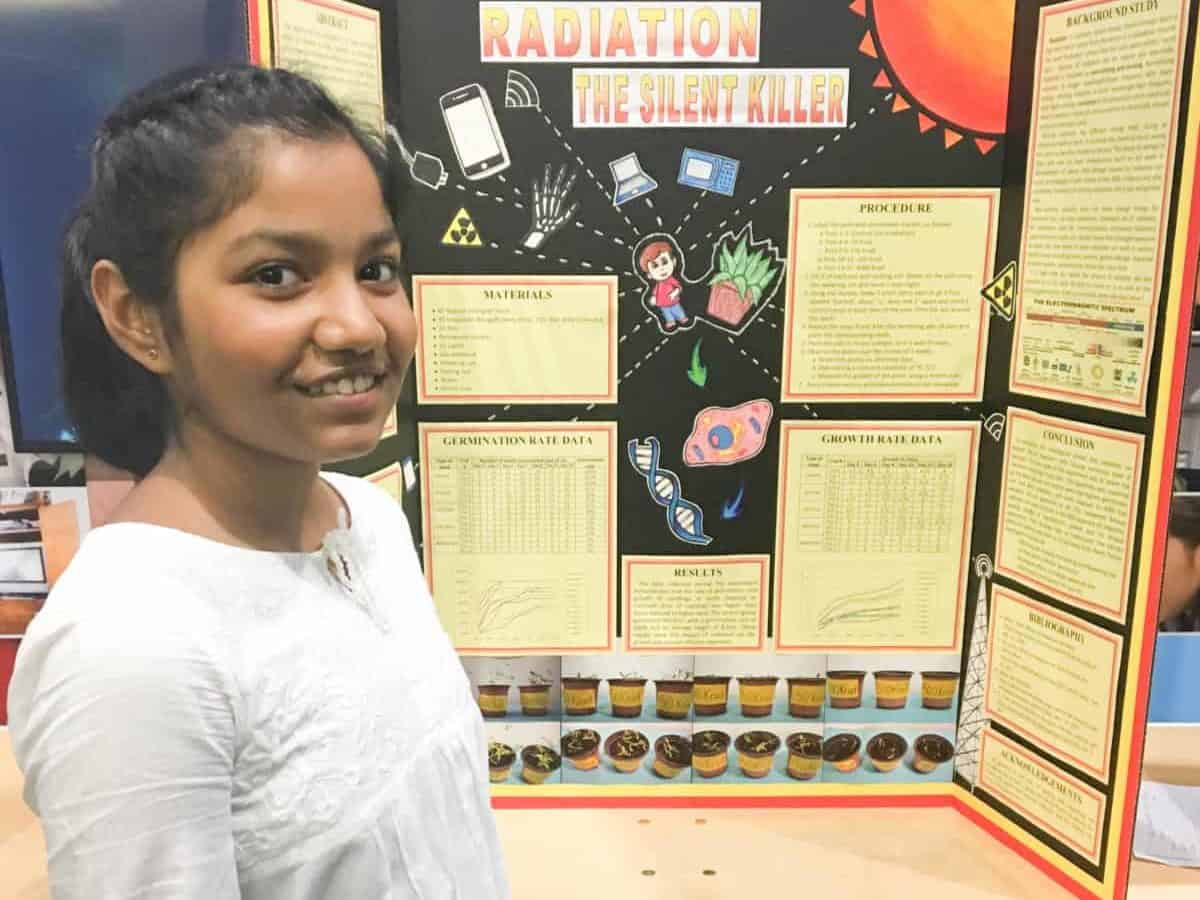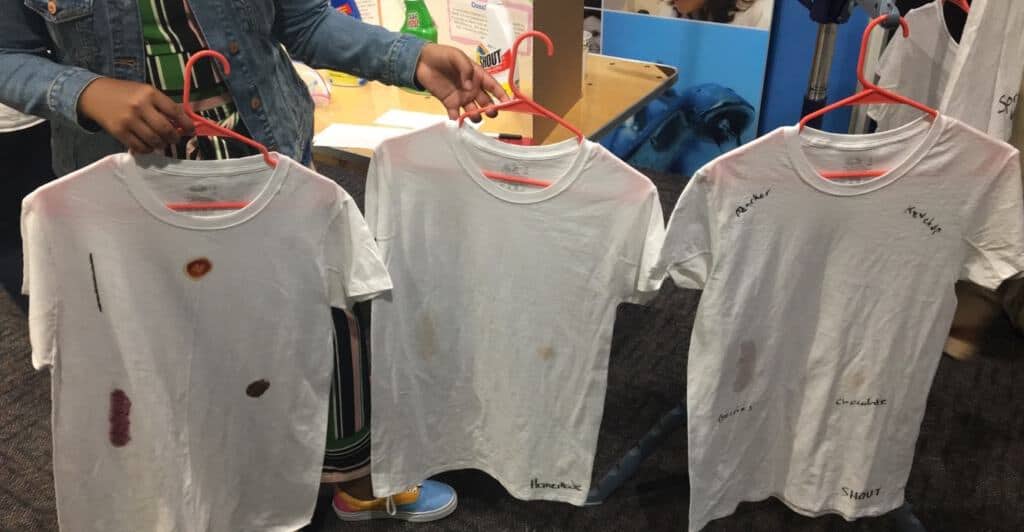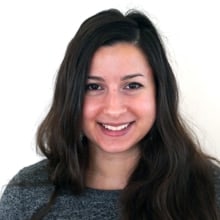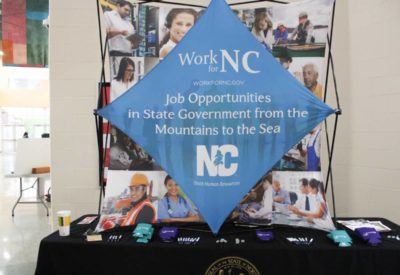

Last Tuesday, the N.C. Association for Public Charter Schools hosted the Celebrating Girls in STEM Showcase. The event, which took place in Huntersville at Duke Energy’s EnergyExplorium, was part of National Charter Schools Week and brought together girls from elementary through high school to learn more about opportunities for women in STEM and to have a platform for their own projects.
The celebration was kicked off by keynote speaker Nehemiah Mabry, civil engineering lecturer at N.C. State and founder of STEMedia — an organization dedicated to inspiring gender and ethnic diversity in STEM fields. Check out a sample of his motivational STEM poetry below.
Mabry’s keynote focus was boosting the confidence of the girls in the room through a series of metaphors. In one activity, he had the audience pass a balloon full of air, followed by a balloon that was half-filled. The students found that it was harder to keep up the balloon with less air. The metaphor here, he said, was that “the more you expand your awareness, the further you’ll be able to go.” He hit his theme home by emphasizing belonging, even “if no one in the room looks like you” — often having the audience repeat the phrase, “I belong here, and I have what it takes.” It’s a message Mabry said he gives to his own girls. He named his first daughter Nia, Swahili for “purpose” — “Because she’s here for a reason. She belongs here,” he said.
After Mabry’s talk, students had a chance to pose questions to an all-women panel, including Jada Carter, Miss Mecklenburg County’s Outstanding Teen 2019, Raven Herndon of the M&M Educational Group, and me. We answered questions on our challenges, work ethic, support systems, and finding our own place in STEM-related fields (or like me, as someone who gets to write about them).
Panelists then walked through the Explorium for a mock-judging activity where students set up their STEM research posters and stood ready for presentations. Students represented Envision Science Academy of Wake Forest, Mallard Creek STEM Academy of Charlotte, Cardinal Charter Academy of Cary, and Pine Lake Preparatory of Mooresville. Project presentations included an up-cycled Bojangles Box as a pet carrier, a comparison of store-bought stain removers with a homemade version (note: the homemade version won), a community garden at school (which Envision Science Academy is actually building on their campus), and a made-at-home security system programmed to send an email and record video.


As a judge for the projects, I was struck by a comment Rhonda Dillingham, executive director of the N.C. Association for Public Charter Schools, made in her introductory remarks.
“Women bring something to the table that is special and unique, and without it, research isn’t balanced,” she said.
Looking at the notes I left on each presentation, I realized I was not only struck by the STEM skills the students had all incorporated in their research projects, but that many of them had worked to solve real-world problems for members of their community:
>A group of students at Pine Lake Prep designed an app to organize neighborhood clean up events in real-time after noticing litter and wanting to do something about it.
>Fourth grader Lauren Marcroft of Mallard Creek STEM Academy had designed a standing pet feeder, inspired by a real-world issue her grandmother was facing. She was having trouble bending down to fill her pet’s bowl.
>Fifth grader Morgan Gilliland, also of Mallard Creek, created a coat with magnetic fastenings designed for disabilities or arm injuries — in place of a more difficult to manage zipper.
>A middle school student from Pine Lake Preparatory designed an app to educate and provide fundraising for those with Type 1 diabetes in a low-income community based off of her friend’s experiences with diabetes.
>Another student at Pine Lake designed an anti-bully app that was not only built to help manage bullying, but also had an introspective element with a quiz to determine if you are the bully.
It was through her own experiences as co-founder and principal of a charter school when Dillingham noticed that girls weren’t getting the attention and focus in STEM that she had wanted them to receive, especially when research gaps that would benefit from women’s perspectives remain to be filled. As one Atlantic article noted a few years ago after new health apps excluded women’s health needs, “The vast majority of tech companies are staffed by men, especially on the development side. Phones are too big for many women’s hands. The newest artificial hearts are designed to fit 80 percent of men but only 20 percent of women.” — And the list goes on.
For Dillingham, it made the need for an event for celebrating girls in STEM all the more clear.
“We need to make sure that our girls are filling those STEM positions,” she said.


